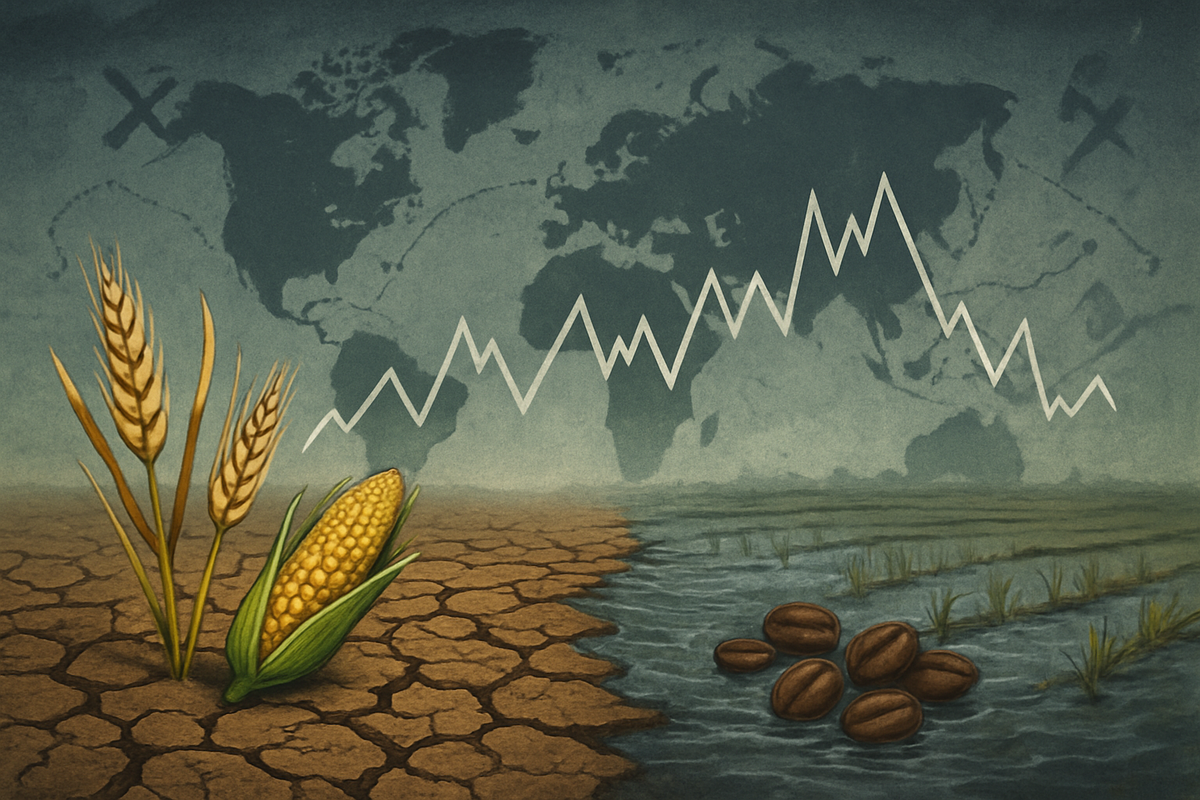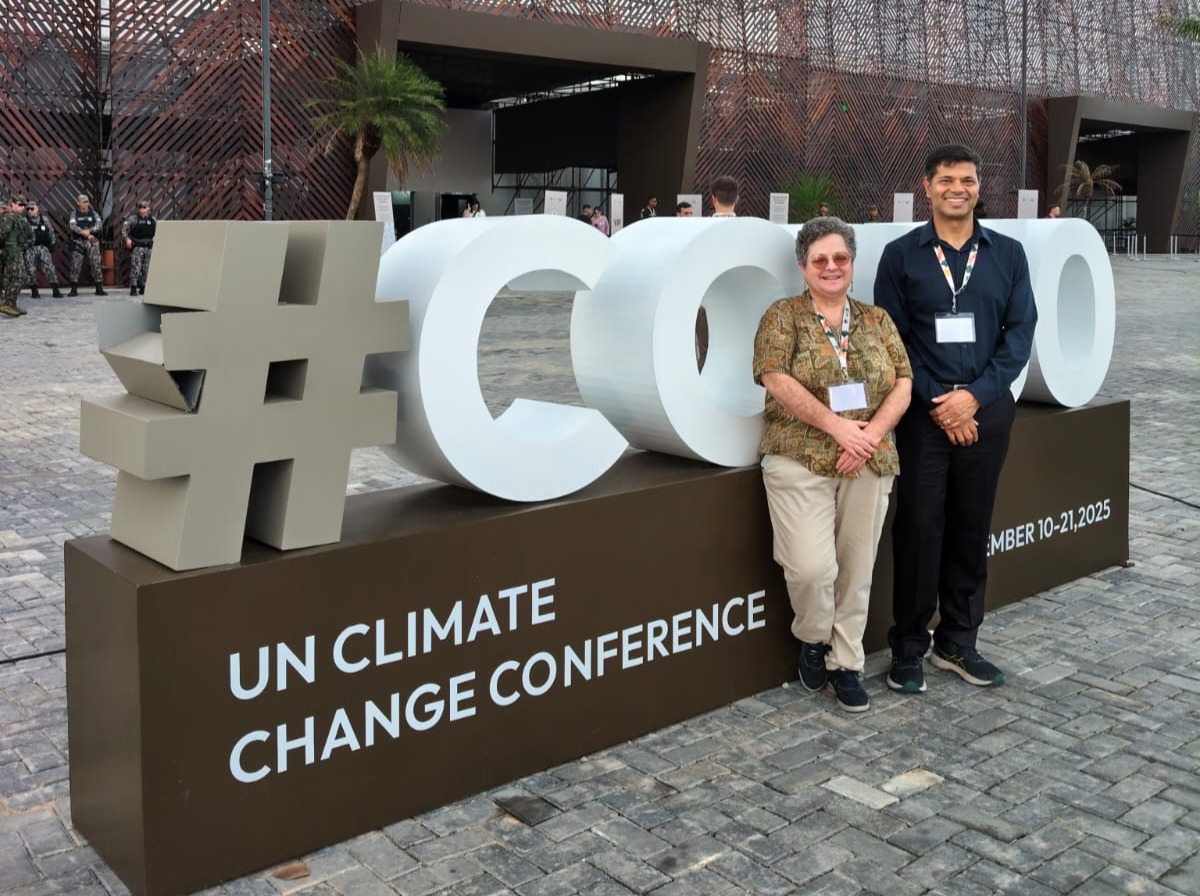Community roots, lasting impact – US Forest Service (.gov)

Report on Reforestation Partnership in Salmon-Challis National Forest and its Contribution to Sustainable Development Goals
Introduction: Addressing Wildfire Impact through Collaborative Action
The Salmon-Challis National Forest, a 4.3-million-acre expanse in Central Idaho, has experienced significant wildfire activity, necessitating accelerated reforestation efforts. This report details a strategic partnership initiated three years ago between the USDA Forest Service and the local non-profit, Salmon Valley Stewardship. The collaboration focuses on landscape restoration and community resilience, directly aligning with several United Nations Sustainable Development Goals (SDGs), particularly SDG 15 (Life on Land), SDG 13 (Climate Action), SDG 8 (Decent Work and Economic Growth), SDG 11 (Sustainable Cities and Communities), and SDG 17 (Partnerships for the Goals).
SDG 17: Partnerships for the Goals – A Framework for Success
Collaborative Model
The partnership between the Salmon-Challis National Forest and Salmon Valley Stewardship exemplifies SDG 17 by leveraging a multi-stakeholder approach to achieve sustainable outcomes. Salmon Valley Stewardship’s two-decade history in Lemhi County, where over 90% of the land is federally managed, provided the community trust and local expertise essential for the project’s success.
Operational Agreement and Capacity Building
- A formal five-year agreement was signed in 2023, solidifying the commitment to long-term reforestation.
- The partnership effectively doubled the reforestation capacity of the Forest Service crew.
- Salmon Valley Stewardship hired a full-time reforestation partnership coordinator and seasonal technicians, creating a shared investment model.
Environmental Impact: Advancing SDG 15 (Life on Land) and SDG 13 (Climate Action)
Restoring Terrestrial Ecosystems (SDG 15)
The primary objective of the partnership is to restore forest ecosystems damaged by fire, a direct contribution to SDG 15. Key activities and achievements include:
- Large-Scale Assessment: Reforestation needs have been addressed on over 40,000 acres of national forest land.
- Post-Fire Surveys: Following the 2022 Moose Fire, which burned 130,000 acres, the partnership surveyed nearly 24,000 acres to map natural regeneration and identify areas requiring intervention.
- Active Reforestation: Projects such as cone collection for local seed sourcing and tree planting are being implemented to accelerate forest recovery and restore biodiversity.
Climate Change Mitigation and Adaptation (SDG 13)
By re-establishing forests, the initiative contributes to climate action by enhancing carbon sequestration. Healthy, resilient forests are also crucial for climate adaptation, helping to regulate water cycles and mitigate the impacts of future climate-related events like wildfires.
Socio-Economic Development: Supporting SDG 8 (Decent Work) and SDG 11 (Sustainable Communities)
Promoting Decent Work and Economic Growth (SDG 8)
The partnership has generated tangible economic benefits for the local community, aligning with the principles of SDG 8.
- New, meaningful employment opportunities have been created in the field of reforestation.
- The initiative is building a local network of reforestation experts, enhancing the local workforce’s skills and long-term employability in natural resource management.
Building Resilient and Sustainable Communities (SDG 11)
The project strengthens the resilience of Lemhi County, a rural community intrinsically linked to the health of the surrounding forest landscape. By restoring the forest, the partnership helps secure the natural resources that are essential for the community’s well-being and economic stability.
Conclusion and Future Outlook
The collaboration between the Salmon-Challis National Forest and Salmon Valley Stewardship demonstrates a successful model for achieving sustainable development in rural, forest-dependent regions. The early successes have established a strong foundation of trust and shared expertise. Moving forward, the partnership aims to expand its efforts, continuing to meet reforestation goals while simultaneously strengthening the local economy and enhancing the region’s resilience to environmental challenges. This initiative serves as a powerful example of how local partnerships can effectively implement and advance the global Sustainable Development Goals on the ground.
Analysis of Sustainable Development Goals (SDGs) in the Article
1. Which SDGs are addressed or connected to the issues highlighted in the article?
The article on the reforestation efforts in the Salmon-Challis National Forest connects to several Sustainable Development Goals (SDGs). The primary focus on restoring forests after wildfires directly addresses goals related to terrestrial ecosystems, while the collaborative nature of the project and its community impact touch upon goals for partnerships, economic growth, and resilient communities.
- SDG 15: Life on Land: This is the most prominent SDG, as the article’s central theme is the restoration of forest ecosystems degraded by wildfires.
- SDG 17: Partnerships for the Goals: The article emphasizes the collaboration between the USDA Forest Service (a public entity) and Salmon Valley Stewardship (a civil society organization).
- SDG 8: Decent Work and Economic Growth: The partnership’s creation of local jobs in reforestation is a key outcome highlighted in the text.
- SDG 13: Climate Action: Reforestation is a critical nature-based solution for climate mitigation (carbon sequestration) and adaptation (building ecosystem resilience to climate-related disasters like wildfires).
- SDG 11: Sustainable Cities and Communities: The project aims to enhance landscape and community resiliency in a rural area heavily dependent on its natural environment, thereby making the community safer and more sustainable.
2. What specific targets under those SDGs can be identified based on the article’s content?
Based on the activities described, several specific SDG targets can be identified:
-
SDG 15: Life on Land
- Target 15.2: “By 2020, promote the implementation of sustainable management of all types of forests, halt deforestation, restore degraded forests and substantially increase afforestation and reforestation globally.” The entire project is an example of restoring degraded forests and increasing reforestation. The article states the partnership “addressed reforestation needs on more than 40,000 acres of national forest land affected by historic wildfires.”
- Target 15.3: “By 2030, combat desertification, restore degraded land and soil…” The work to reforest land severely damaged by fire is a direct effort to restore degraded land. The article mentions surveying areas to see where “intervention, such as planting, may help” jumpstart recovery.
-
SDG 17: Partnerships for the Goals
- Target 17.17: “Encourage and promote effective public, public-private and civil society partnerships…” The article is a case study of this target in action, describing the formal “five-year agreement” between the Forest Service and Salmon Valley Stewardship as a “natural partner” for the effort.
-
SDG 8: Decent Work and Economic Growth
- Target 8.5: “By 2030, achieve full and productive employment and decent work for all…” The article explicitly mentions that “new jobs added to the local workforce by Salmon Valley Stewardship offer meaningful employment opportunities in the locally relevant field of reforestation,” including a “full-time reforestation partnership coordinator and seasonal technicians.”
-
SDG 13: Climate Action
- Target 13.1: “Strengthen resilience and adaptive capacity to climate-related hazards and natural disasters in all countries.” By restoring the forest ecosystem, the partnership is strengthening the landscape’s resilience to future climate-related hazards like wildfires, which are increasing in frequency and intensity. The goal is to keep the region’s forests “healthy, resilient, and thriving for generations to come.”
3. Are there any indicators mentioned or implied in the article that can be used to measure progress towards the identified targets?
Yes, the article mentions several quantitative and qualitative indicators that can be used to measure progress:
- Indicator for Target 15.2 (Progress towards sustainable forest management): The article provides a direct quantitative measure: “The partnership has addressed reforestation needs on more than 40,000 acres of national forest land.” Another specific indicator is the area surveyed for natural regeneration: “the Salmon Valley Stewardship’s crew surveyed nearly 24,000 acres within the fire footprint.”
- Indicator for Target 8.5 (Employment): While not providing an exact number, the article implies an increase in employment as an indicator. It mentions the hiring of a “full-time reforestation partnership coordinator and seasonal technicians,” which “nearly doubled the capacity of the Salmon-Challis crew.” The number of new jobs created is a clear indicator of progress.
- Indicator for Target 17.17 (Partnerships): The existence of the formal “five-year agreement” and the mention of a “shared investment” serve as qualitative and implied financial indicators of a functioning public-civil society partnership.
- Indicator for Target 13.1 (Resilience): The area of land successfully reforested (40,000 acres) can be used as a proxy indicator for increased ecosystem resilience. The data collected from regeneration surveys, which “help determine where the forest is regenerating on its own, and where planting or other human intervention may be needed,” is another indicator of building adaptive capacity.
4. Summary Table of SDGs, Targets, and Indicators
| SDGs | Targets | Indicators Identified in the Article |
|---|---|---|
| SDG 15: Life on Land | 15.2: Promote sustainable forest management, restore degraded forests, and increase reforestation. | – 40,000 acres of national forest land addressed for reforestation needs. – 24,000 acres surveyed for natural regeneration after the Moose Fire. |
| SDG 17: Partnerships for the Goals | 17.17: Encourage and promote effective public-civil society partnerships. | – Existence of a formal five-year agreement between the USDA Forest Service and Salmon Valley Stewardship. – Mention of a “shared investment” in the project. |
| SDG 8: Decent Work and Economic Growth | 8.5: Achieve full and productive employment and decent work for all. | – Creation of new jobs: a full-time coordinator and seasonal technicians. – Doubling the capacity of the local silviculture crew. |
| SDG 13: Climate Action | 13.1: Strengthen resilience and adaptive capacity to climate-related hazards. | – Reforestation efforts on thousands of acres to build ecosystem resilience. – Data collection from surveys to inform adaptive management strategies (e.g., where to plant). |
Source: fs.usda.gov
What is Your Reaction?
 Like
0
Like
0
 Dislike
0
Dislike
0
 Love
0
Love
0
 Funny
0
Funny
0
 Angry
0
Angry
0
 Sad
0
Sad
0
 Wow
0
Wow
0
















































:focal(1500,1000)/https://media.globalcitizen.org/a6/9a/a69a4720-d8a1-4715-b596-18738d03c05c/rotary_polio_hero_image.jpg?#)







/countries/sri-lanka/photo-credit---dmc-sri-lanka.tmb-1200v.jpg?sfvrsn=dc298bcc_1#)


















